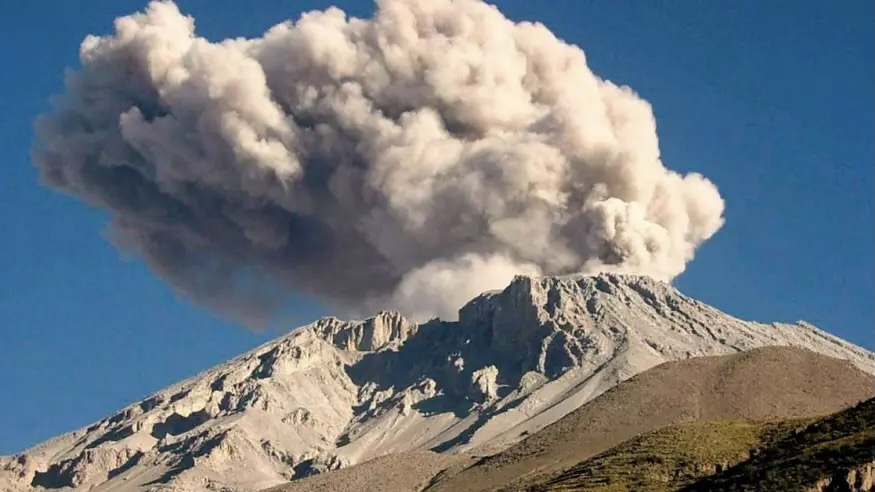The government of Peru, on Wednesday, July 5, declared a 60-day state of emergency in the southern department of Moquegua due to the eruption of the Ubinas volcano. The decision came a day after two massive explosions from the volcano were recorded.
The Council of Ministers stated that the measure had been taken to protect the inhabitants living in nearby towns from “imminent danger” due to falling ash and harmful gasses released from volcanic activity. The council said that the step would guarantee the legal framework and budgets to carry out a series of urgent and vital actions to reduce the risk to human lives and other losses, as well as to support rehabilitation later on.
The Ubinas is located in the General Sánchez Cerro province of Moquegua. It is considered one of the most active volcanoes in Peru. It had been inactive for the past four years. It began to emit gasses on June 22, and the region experienced persistent seismic activity.
On Tuesday, July 4, between 3 and 4 in the afternoon, the first explosions were registered. The Geophysical Institute of Peru (IGP) reported that the explosions spewed plumes of ash and smoke into the atmosphere, reaching a height of 5,500 meters above the crater and dispersing ash in a radius greater than 10 kilometers. The ash reached the districts of Ubinas and Matalaque, covering the streets and the roofs of houses.
The explosions and the eruption of a large amount of ash led the authorities to raise the alert from yellow to orange. The authorities declared a series of preventive measures, advising the region’s population, approximately 2,000 people, to stay away from the volcano and to keep their doors and windows closed, and cover their water tanks to avoid contamination. The inhabitants were also directed to wear masks and glasses to minimize the effects on health. These measures were announced for the surrounding districts of Ubinas, Yunga, Lloque, Chojata, Matalaque and San Juan de Tarucani.
On Thursday, July 7, another explosion was registered. The National Institute of Civil Defense of Peru (INDECI) warned that the ashes from the latest explosion may affect 13 surrounding districts.
The authorities have not ordered an evacuation of people in the area, however, according to reports, the National Civil Defense Institute is cleaning and disinfecting the Sirahuaya shelter that was built in 2019, when the Ubinas erupted the last time and resulted in the displacement of thousands of people.
On July 19, 2019, the Ubinas volcano had an eruption that reached 6,500 meters above the crater, dispersing ash in the towns of Moquegua, Puno and Tacna, exceeding 250 km in distance and reaching La Paz, the capital of neighboring country Bolivia.
Southern Peru is home to a dozen active volcanoes. It is also an area where important mineral resources are exploited. In addition, it is part of the “Pacific Ring of Fire,” a 40,000-kilometer-long region that records about 90% of the planet’s seismic activity.





